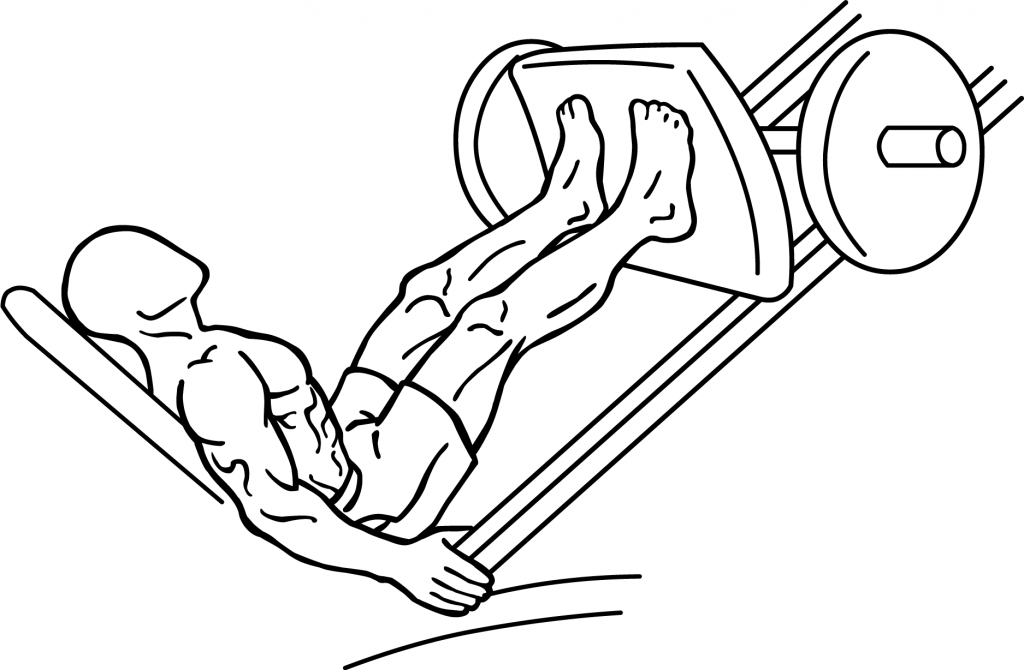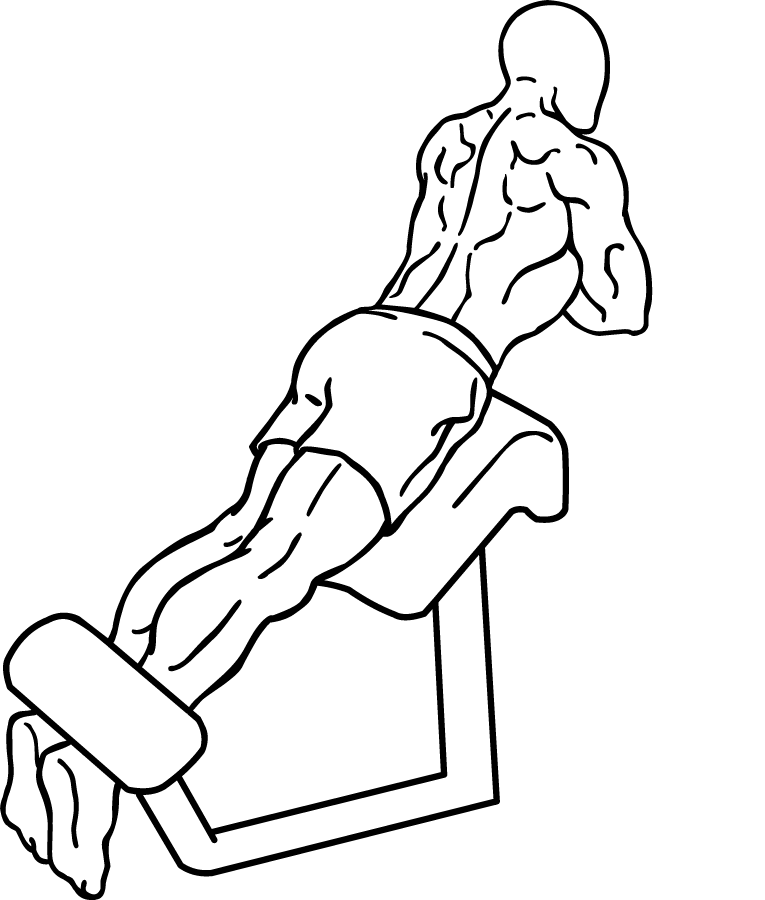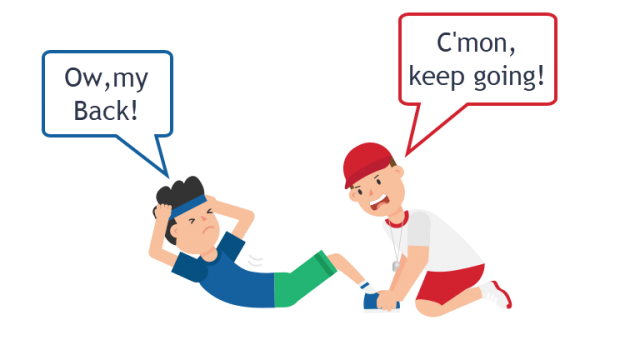In his textbook for coaches and trainers of elite athletes, Ultimate Back Fitness and Performance: Sixth Edition, Dr. Stuart McGill lists pervasive exercises that are particularly damaging to the spine. To my consternation, this list overlaps almost perfectly with the list of exercises I loved best when I was dedicated to pole dancing. Don’t be like me, kids! Save your spines! Don’t do these seven exercises!
1) Sit-Ups
When I was in elementary school, we’d have to do state-mandated fitness tests every couple of years. These tests always included sit-ups, and they were the only test component I was moderately competent at.
As an adult, I got to pick my own exercises, and sit-ups seemed like a no-brainer. We’d learned them in school! They were part of a fitness test! They had to be safe, and healthy to boot.
Ah, if only! It turns out that sit-ups place an unnecessary amount of pressure on the spine, which predisposes it to fail. Other exercises, like the plank, can challenge the ab muscles while sparing your spine. Of course, I learned this after I did about 5,000,000 sit-ups.
As McGill notes:
“Many athletes with bad backs are prescribed back and abdominal exercises that exceed the tolerance of their compromised tissues. In fact, I believe that many commonly practiced flexion exercises result in so much spine compression that they will ensure that the athlete becomes a patient! Many institutions still hang on the idea that speed situps somehow are a test of fitness – this is producing back backs. Even the traditional slow-speed sit-up imposes approximately 3300 N (730 lbs) of compression on the spine, a criterion injury level set by some governments! It is a poorly designed exercise for many people.” (pg. 93)
2) Lumbar Extension Machines
Of course I loved the lumbar extension machine. I had an easy enough time finding exercises to work the muscles in my upper back (pullups, pull-downs, rows), but the lumbar extension machine seemed like a great way to challenge my low back.
The truly embarrassing thing is, I had heard these machines could damage your back, but I shrugged off the warnings. Some people will sound the alarm over any silly thing, I figured. And my back was perfectly fine.
I would say this was my stupidest exercise belief, if I didn’t have so many stupid beliefs to choose from.
McGill says:
“Some exercise devices are based on the approach to isolate lumbar motion. This creates stress concentrations in the lumbar discs. Replicating the range of motion (from neutral to full flexion), together with the compressive loads measured in some of these devices is one of the better ways we have found to produce disc herniations in the lab.” (pg. 68)
3) Seated Leg Press
As an aspiring pole dance, I focused on training my upper body and core, and treated my legs as an afterthought. I had a vague sense that I should do something for my legs, but I didn’t really know or care what.
From my perspective, the seated leg press was perfect. The machine seemed to remove the need for much thought, and because I just plopped down on the seat, it seemed totally manageable after I finished my real exercises.
Did I know, or care, that this machine was putting me in an unnatural position that would possibly hurt my spine? Not really.
Oh, how I learned.

Photo courtesy of Everkinetic via Wikimedia Commons.
McGill says:
“Performance simply cannot be trained in a sitting posture – yet count the number of machines that require sitting in your local gym. Further, the sitting posture required of many machines results in increased bending loading to the back – for example, many seated leg press machines force the lumbar spine into flexion with the application of combined shear and compression. Atypical muscle activation patterns result. I would very rarely recommend this approach except in some very particular cases. While this approach is popular with some body builders who are interested in training particular muscles we are interested in training the squat mechanism (notice I did not state the muscles involved). Train the motion, not the muscle.” (pg. 44–45)
4) Hanging Leg Raises
I was always looking for new and interesting ways to challenge my core. From the first time I tried the hanging leg raise, I was in love. It was a killer ab exercise that also challenged my grip and back.
I didn’t realize that I was really killing my spine, not my abs. I certainly didn’t realize I was destroying my discs, or that discs don’t repair themselves the way muscles do. You live, you learn. And then get back pain.
McGill says:
“[H]anging with the arms from an overhead bar and flexing the hips to raise the legs is often thought to impose low spine loads because the body is hanging in tension—not compression. This is faulty logic. This hanging exercise generates well over 100 Nm of abdominal torque to a spine that is often flexed due to sloppy technique. Similar activation levels can be achieved with the side bridge…with lower spine loads. Flexing and twisting is also risky for the discs.” (pg. 93)
5) Spine Twisting Machines
Is it any surprise that I did my share of reps on a spine twisting machine, when twisting with weights is uniquely damaging to the discs? Actually, I did most of these reps early in my gym days. Later, I found an even better way to destroy my spine – the Russian twist.
McGill doesn’t specifically mention the Russian twist, but it breaks every rule of good sense. It takes the posture of a sit-up and adds twisting under load (I preferred a 10 lb. dumbbell). Only a dang fool would think this exercise was worth the risks. I did so many.
McGill says:
“Repeated twisting causes the annulus to slowly delaminate. This is evidenced by the tracking of the nucleus into the split layers of the annulus. Adding torsion to the twisting motion, reduces the compressive strength of the joint while adding compression accelerates the damage. For these reasons we do not recommend the spine twisting exercise machines.” (pg. 70)
“[E]levated risk from very high tissue loading may occur when the spine is fully twisted and there is a need to generate high twisting torque. In other words generating twisting torque, while twisting away from neutral, appears to be problematic. Now consider the torso twisting machines found in various fitness and training facilities. While there are always individuals who are able to tolerate specific modes of loading, here is a machine that will lead to troubles in many athletes. Even some of the best discus throwers, (a torsional task), cannot train with these types of exercises without exacerbating their back troubles.” (pg. 102)
6) Roman Chair/Superman
I want to go on record and say that I was never that fond of the superman. It might be the only dangerous exercise that is not responsible for destroying my spine.
No, I was far more interested in destroying my spine with the Roman chair. Not only did I love doing the sort of reverse-sit-ups one does on those things, but I would use 25-lbs weights to make it even more deadly.

Photo courtesy of Everkinetic via Wikimedia Commons
McGill says:
“The common extension task of performing torso extension with the legs braced and the cantilevered upper body extending over the end of a bench or Roman chair activates all four extensor groups and typically imposes over 4000 N (about 1000 lbs) of compression on the spine. Even worse is the commonly prescribed back extension task in clinics, in which the patient lies prone and extends the legs and outstretched arms (superman); this again activates all four extensor sections but imposes up to 6000 N (about 1400 lbs) on a hyper-extended spine. This is not justifiable for any patient and is a poor method for athletes as well! The birddog is a superior stabilization exercise given the stabilizing motor patterns and the neutral spine posture.” (pg. 96)

Photo courtesy of Everkinetic via Wikimedia Commons.
7) Hamstring Stretches
My flexibility is nonexistent, but any pole dancer worth her salt can do the splits six ways to Sunday. My approach (endorsed by no one) was to stretch my hamstrings as often and as deeply as possible.
And then, when my sciatica started in earnest, my strategy was to focus even more on forward bends. A good hamstring stretch would trigger a round of cramps (my main sciatica symptom). And I assumed this was a good thing.
Until I started reading McGill’s books, I had no idea what my disease trajectory would look like, or how to get over my sciatica. Since my doctors and physical therapists couldn’t tell me what would happen, I made up the ending to my own story. I would run into a wall of pain, but then I would smash through it. Once I made it out the other side, I’d be pain free.
This was the pattern with my walks – I got worse before I got better – but I overapplied it. The hamstring stretches I was doing only aggravated my nerve. Once I stopped doing them, my sciatica got better.
“Too many of the patients referred to me have been prescribed hamstring stretches; apparently this is routine in many clinics. Yet when we perform provocative testing the pain is exacerbated by neural tension. This type of pain and tension cannot be stretched away. Ceasing this stretching allows the nerves to desensitize and a greater range of pain-free motion returns. The moral of the story is that there needs to be a rationale for stretching.” (pg. 14)
Indestructible Until Proven Otherwise
The Titanic was unsinkable until it sank, records are unbreakable until they are broken, and my back was indestructible until it was destroyed. By the time I had real back trouble, it was too late to do anything about it.
But, my problems could have been prevented, if I had the knowledge and will to do so. If I could rewind time, I would read Ultimate Back Fitness and Performance before I ever touched a pole. Not only does McGill specify which exercises to avoid, but he lists better alternatives, and explains how to build a proper training program.
It may be too late to spare my own spine, but now, I can choose sensible ways to work out and spare my back. And if I am ever in a position to train an elite team of Olympic rowers, I shall be very well prepared indeed.

2 thoughts on “7 Exercises to Avoid If You Have Sciatica”